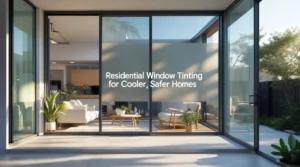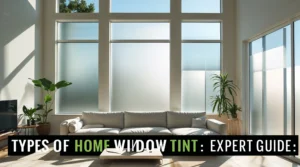Sunlight streaming through your windows can brighten your home and lift your mood, but too much of it can make rooms uncomfortably hot and fade your furniture over time. If you’ve ever wondered how to block sun heat from windows without losing that natural light, this guide will walk you through every effective solution available. Whether you want something simple you can do yourself or a long-term fix that improves energy efficiency, understanding your options helps you create a cooler, more comfortable space.
Why Sunlight Heats Your Home
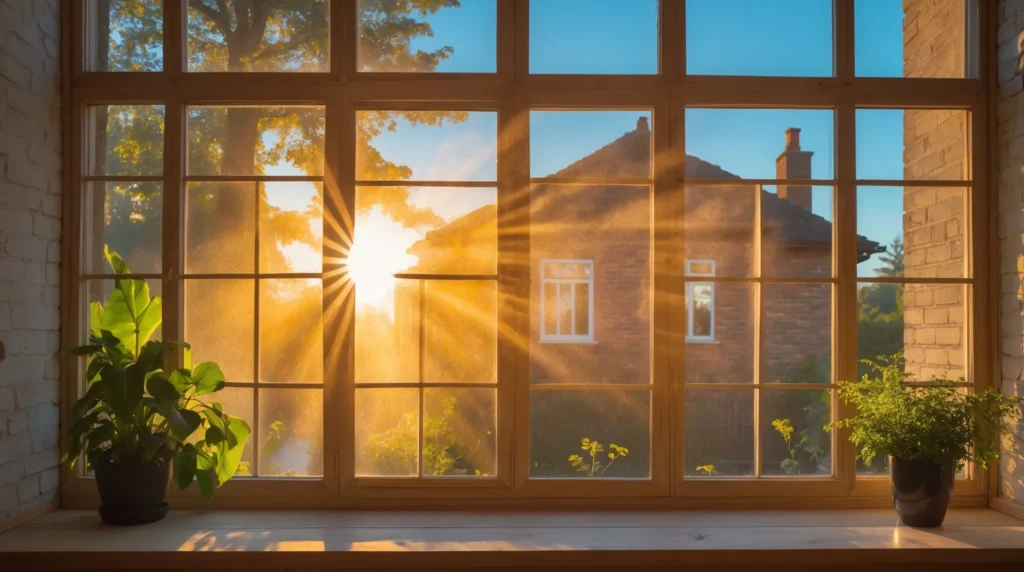
Before we look at solutions, it helps to understand why windows let in so much heat. Sunlight contains ultraviolet (UV) and infrared (IR) rays. The infrared rays carry heat, while UV rays are what cause materials like fabric and wood to fade. When sunlight passes through untreated glass, those rays are absorbed by walls, furniture, and floors, which then release heat into the air. That’s why even on mild days, rooms with large windows can feel hot and stuffy.
Windows act like magnifiers; they allow the sun’s warmth in but trap it inside, especially in the afternoon when sunlight is strongest. This “greenhouse effect” is great for plants but not for keeping your home comfortable.
Best Methods for How to Block Sun Heat from Windows Effectively
Blocking the sun’s heat from windows isn’t just about comfort; it’s also about saving energy and protecting your interiors from fading or UV damage. Whether you’re dealing with hot summer temperatures or year-round sunlight, there are several effective methods to reduce heat gain and maintain a cooler home.
1. Window Tinting Films
One of the most efficient ways to block the sun’s heat from windows is by applying professional window tinting film. These films act as a barrier, reflecting infrared heat while still allowing light to pass through. They also block harmful UV rays that can fade furniture and flooring. Modern window tints can reduce solar heat by up to 80%, making them a top choice for energy efficiency and comfort.
2. Solar Shades or Roller Blinds
Solar shades are designed with heat-reflective materials that filter sunlight without completely blocking your view. They help maintain brightness indoors while reducing glare and heat. Roller blinds are another smart option if you want adjustable light control with a clean, modern look.
3. Thermal or Blackout Curtains
If you prefer something simple and decorative, thermal curtains are a great way to insulate your windows. They feature multiple layers of thick fabric that block sunlight and prevent heat from entering your home. During the hottest hours of the day, drawing these curtains can instantly make a noticeable difference in room temperature.
4. Exterior Shutters and Awnings
Exterior solutions like shutters or awnings block sunlight before it even hits your glass. This prevents most of the heat from entering your living space. Retractable awnings are especially useful because they let you control shading depending on the sun’s position throughout the day.
5. Reflective Window Film or Low-E Glass
Reflective window films and Low-E (low-emissivity) glass are excellent for homes exposed to direct sunlight. They reflect radiant heat while keeping interiors bright and cool. Installing these solutions can significantly reduce your air conditioning costs.
6. Indoor Plants as Natural Shade
Placing large indoor plants near your windows can act as a natural sun filter. Plants absorb heat and light, creating a more comfortable atmosphere while improving air quality. It’s a small change with a noticeable impact, especially in living rooms or sun-facing windows.
7. Insulated Blinds or Honeycomb Shades
Honeycomb (cellular) shades trap air within their layered design, forming an insulating barrier that reduces both heat gain and loss. These are ideal for bedrooms and large glass doors, offering comfort and energy savings year-round.
8. DIY Temporary Solutions
If you’re on a budget, temporary fixes like reflective window covers, aluminum foil sheets, or even removable heat-blocking film can provide relief during peak summer months. While not as stylish or durable, they work well for renters or short-term needs.
9. Smart Window Systems
For tech-savvy homeowners, smart tinting glass or automated blinds can adjust their opacity based on sunlight intensity. These systems optimize natural light while minimizing heat, giving you full control over indoor comfort with just a button press.
10. Professional Window Tinting Services
When you want long-term, maintenance-free protection, professional installation is the best option. Expert installers ensure perfect fitment, no bubbles, and maximum heat rejection. Companies like Window Tinting Las Vegas offer high-performance films designed for desert climates, helping you maintain a cool home even during extreme heat.
Use Heat-Reflective Window Film
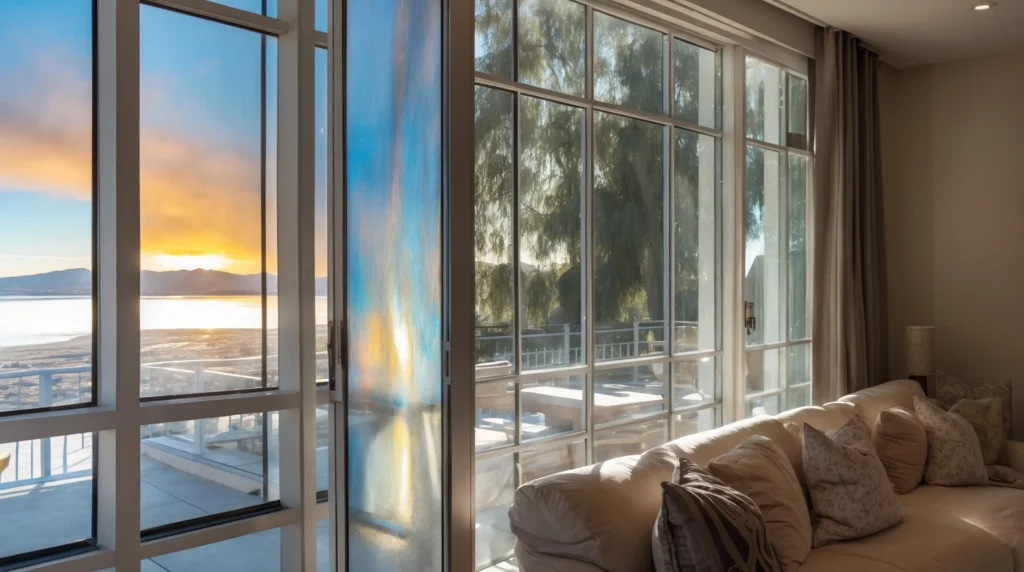
One of the most effective and affordable ways to block the sun and heat from windows is to install window tinting film. These films act as invisible sun filters for windows, reflecting heat and UV rays before they enter your home. Quality films can block up to 80% of solar heat and nearly 99% of UV radiation.
There are different types of window tints available, from clear films that maintain visibility to darker or mirrored ones that add privacy. If you live in a sunny area like Las Vegas, professional installation from a trusted provider such as Window Tinting Las Vegas ensures proper coverage and a flawless finish. These films can make a noticeable difference in indoor temperature, helping reduce energy costs by easing the load on your air conditioning system.
Install Solar Shades or Blinds
Solar shades are another smart way to reduce heat without completely darkening your home. These special roller shades are made from materials designed to block UV rays and glare while allowing you to see outside. They come in different openness levels, which determine how much light you want to filter in.
For south- and west-facing windows that get direct sunlight, solar blinds are especially effective. They can reduce glare, maintain privacy, and make your living space far more comfortable during the day. Motorized options even let you control them remotely for convenience.
Try Thermal Curtains or Blackout Drapes
If you prefer a traditional look, thermal or blackout curtains can be a simple yet powerful solution. These thick, insulated drapes have a special lining that reflects sunlight and prevents heat transfer through glass. When closed during the hottest part of the day, they can significantly lower the room temperature.
To get the most out of them, make sure the curtains cover the entire window and overlap slightly on each side. A light-colored or reflective backing works best for keeping sunlight out. At night, they can also help retain warmth during cooler months, a double benefit for year-round comfort.
Add Exterior Window Shades or Awnings
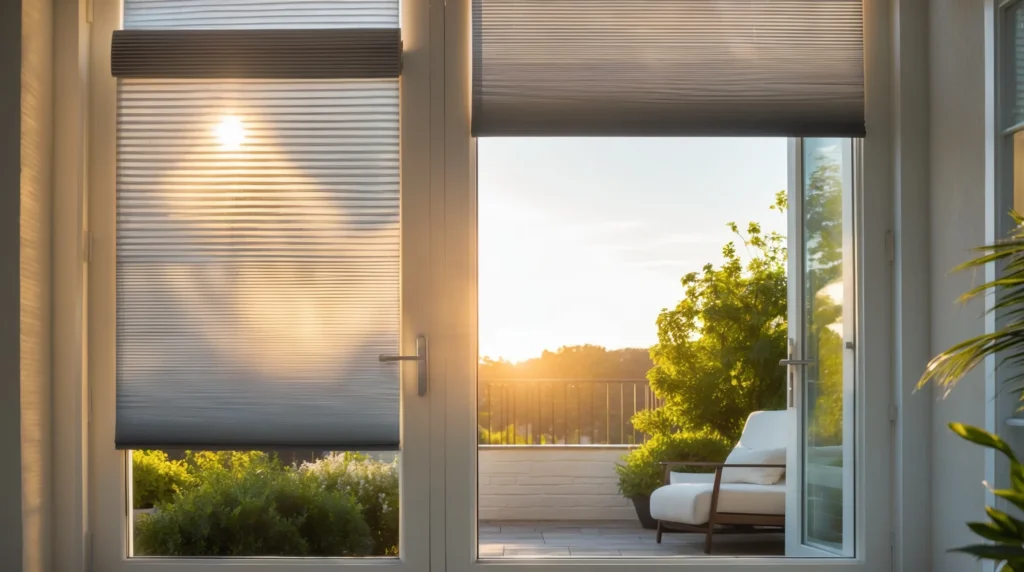
Stopping sunlight before it hits the glass is one of the most efficient ways to reduce heat. Exterior window shades, retractable awnings, or outdoor blinds can do just that. They block direct sunlight, especially during peak hours, and reduce the amount of heat absorbed by the window.
Exterior options are ideal for large patio doors or west-facing windows that get strong afternoon sun. They not only improve comfort but also protect your home’s exterior surfaces from fading and cracking over time.
Apply UV-Blocking Window Coatings
If you want protection without changing how your windows look, consider UV-blocking coatings. These transparent layers can be applied directly to the glass and reduce the transmission of UV and infrared rays. They’re perfect for homes where appearance matters, such as modern glass-fronted houses or offices.
These coatings are long-lasting, require little maintenance, and complement existing window treatments like curtains or blinds. They work best when combined with energy-efficient window glass.
Use Reflective or Insulating Window Covers
Reflective window coverings, like bubble-foil insulation or reflective film panels, are often used in garages, attics, or other areas that get extremely hot. They reflect sunlight and heat back outside while helping to trap cooler air indoors.
Though not always decorative, these coverings are highly practical. For a cleaner look, you can use removable window inserts that combine reflection and insulation. During winter, they also prevent heat loss, making them a cost-effective all-season solution.
Go for Energy-Efficient Windows
If your home has old, single-pane windows, replacing them with energy-efficient double or triple-pane windows can be a game-changer. Modern windows come with low-emissivity (Low-E) glass, which has a thin metallic layer that reflects infrared heat while allowing visible light through.
Though replacing windows is a bigger investment, it pays off in energy savings, comfort, and even home value. These windows also improve sound insulation and enhance the look of your home.
Try DIY Options to Block Heat
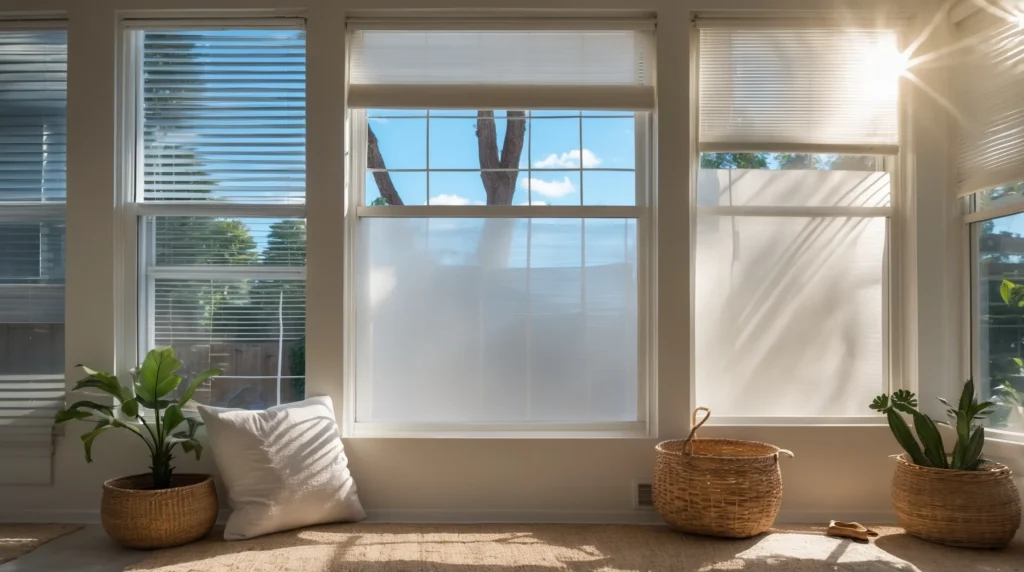
If you’re looking for budget-friendly solutions, there are a few easy DIY methods. For example, applying DIY window tint kits, hanging reflective sheets, or using removable thermal window inserts can all help reduce sunlight and heat.
Even simple steps like keeping blinds closed during peak sunlight hours or using white window shades can make a noticeable difference. For renters, these non-permanent options are a great way to stay cool without altering the property.
Use Indoor Plants for Natural Shade
Adding tall or leafy indoor plants near sunny windows can help absorb some sunlight naturally. Plants like palms, fiddle leaf figs, or ferns act as living filters, reducing glare and softening the intensity of the sun. While they won’t block heat completely, they can complement other cooling methods beautifully.
Greenery also improves indoor air quality and adds a calming aesthetic to any space, making it both a functional and decorative choice.
Combine Solutions for the Best Results
No single solution can block every bit of heat, but combining a few methods gives you the best of all worlds. For example, installing UV window film, adding solar shades, and using thermal curtains can dramatically cut heat, glare, and fading while keeping your rooms bright and pleasant.
If you’re unsure what will work best for your specific windows or home layout, professionals like Window Tinting Las Vegas can help you find the right balance of aesthetics and performance.
How to Choose the Right Option for Your Home
When deciding how to block sunlight and heat from your windows, consider these factors:
- Direction of sunlight: South- and west-facing windows need the most protection.
- Window size and type: Larger panes may benefit more from professional tinting or external shades.
- Climate: Hot, sunny climates require higher UV protection levels.
- Budget: Options range from affordable DIY fixes to long-term window replacements.
- Aesthetics: Choose solutions that enhance rather than clash with your home’s design.
Every home is different, and the right combination depends on your priorities — whether that’s saving energy, maintaining light, or protecting your interiors.
Final Thoughts
Knowing how to block sun heat from windows can make a huge difference in comfort, energy use, and overall home quality. From reflective window films to insulating curtains and energy-efficient glass, the options are diverse and adaptable to your needs. You don’t have to live with unbearable summer heat or soaring cooling bills. The right solutions will keep your home bright, cool, and welcoming year-round.
For professional help or custom recommendations, contact Window Tinting Las Vegas today. Our experts specialize in residential and commercial window tinting, offering durable, high-quality films that block heat and protect your interiors from UV damage. Call us now to schedule your free consultation and enjoy a cooler, more energy-efficient home.

